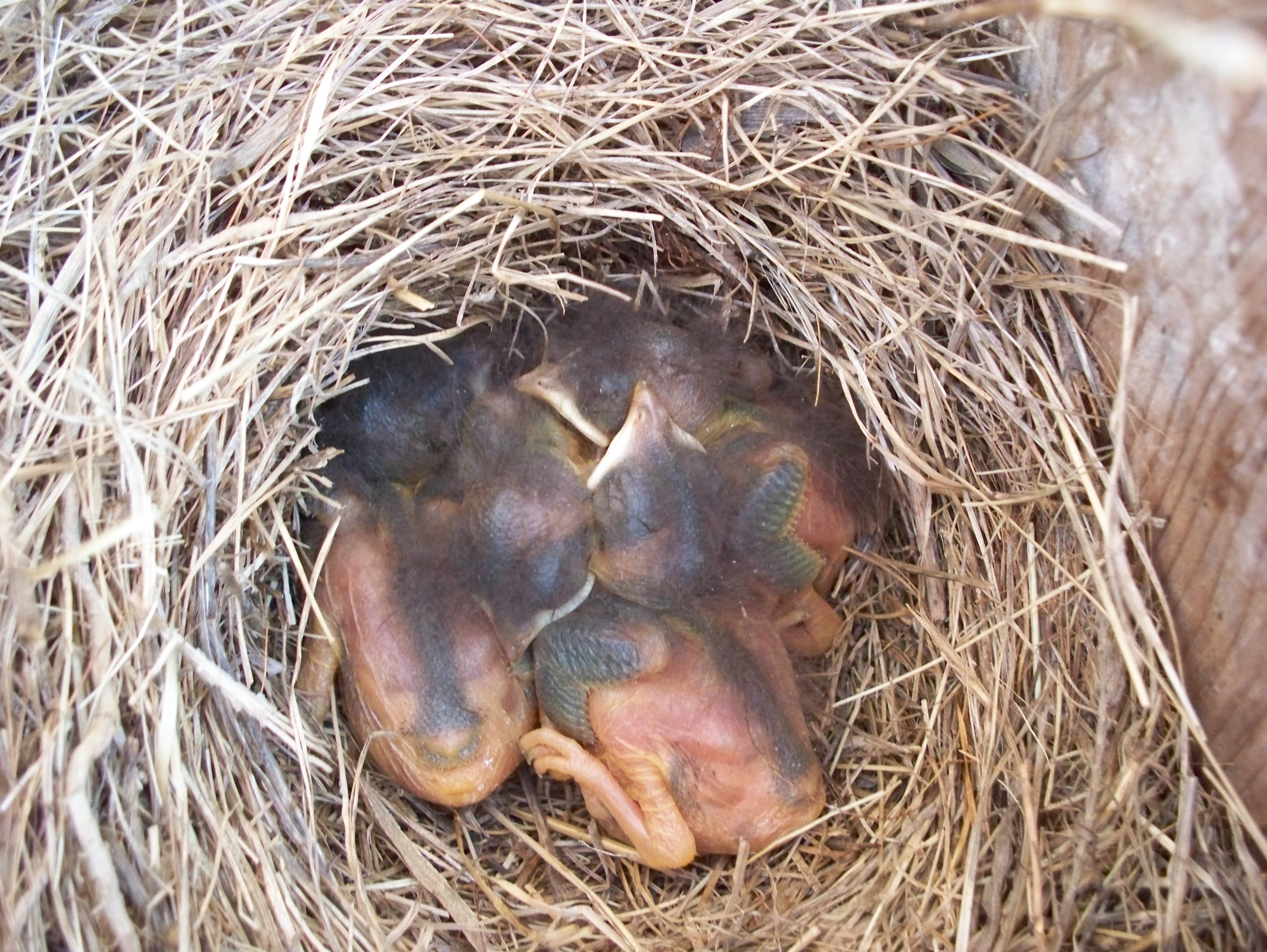Adaptations Through Anatomy
Flying
Like most birds, almost the entire anatomy of a Tree
Swallow is modified for flying. The most obvious of these adaptations are
their feathers. In reality these feathers are just modified scales from
their reptilian ancestor. Other adaptations that help with flying include
hollow bones, lack of an urinary bladder, reduced gonads during non-breeding
season, toothless beak (all of which help to reduce body weight), and a
strong clavicle and sternum that anchor their massive breast muscles used for
their long flights.
 For
Tree Swallows especially, flying provides many benefits. Like was already
mentioned in
Diet, Tree Swallows rely on their ability to fly to capture their meals.
Insects provide an enormous amount of nutrition for these animals and their
lives depend on it. Flying also allows Tree Swallows to escape from
predators and allow long distance migration.
For
Tree Swallows especially, flying provides many benefits. Like was already
mentioned in
Diet, Tree Swallows rely on their ability to fly to capture their meals.
Insects provide an enormous amount of nutrition for these animals and their
lives depend on it. Flying also allows Tree Swallows to escape from
predators and allow long distance migration.
Because Tree Swallows are such active birds they require a lot of energy which they receive from their active metabolism. Unlike their
reptilian relatives, birds are endothermic so they can maintain a high, constant
body temperature like us. Birds also have a closed circulatory system with
a four chambered heart, like us. Along with their very efficient
respiratory system, Tree Swallows are able to supply their tissues with
sufficient oxygen and nutrients needed for their active life style.
energy which they receive from their active metabolism. Unlike their
reptilian relatives, birds are endothermic so they can maintain a high, constant
body temperature like us. Birds also have a closed circulatory system with
a four chambered heart, like us. Along with their very efficient
respiratory system, Tree Swallows are able to supply their tissues with
sufficient oxygen and nutrients needed for their active life style.
Also, unlike that of reptiles, with their complex flying movements they have
larger brains. With these larger brains they are adapted with increased
vision and better control of their muscles for flying.
Other Characteristics
We already saw in
Identification that Tree
 Swallows
can be distinguished from other birds based on their colors,
size, and life cycle. Tree Swallows can also be separated
from other birds based on their beak shape and the anatomy of
their feet.
Swallows
can be distinguished from other birds based on their colors,
size, and life cycle. Tree Swallows can also be separated
from other birds based on their beak shape and the anatomy of
their feet.
When birds were evolving, mostly based on where they lived or what food was available, their beaks took on a variety of shapes. Tree Swallows have evolved to have a very slender beak that opens wide which is adapted for capturing and crushing insects.
Comparing
this to one of its predators, the American kestrel, this is completely different
even though
2.jpg) they fall into the same Class. The American kestrel has
adapted by having a strong, hooked beak that is used to tear flesh and crush
bones of its small prey, like the Tree Swallow. Also, other birds like the
Ruby-throated Hummingbird have different beaks as well, having a very long and
slender beak that has adapted to feed on nectar inside flowers.
they fall into the same Class. The American kestrel has
adapted by having a strong, hooked beak that is used to tear flesh and crush
bones of its small prey, like the Tree Swallow. Also, other birds like the
Ruby-throated Hummingbird have different beaks as well, having a very long and
slender beak that has adapted to feed on nectar inside flowers.
Other ways Tree Swallows have adapted to their environment based on their behaviors are through their modified feet. The way their feet are designed allows them to adapt to their environments in the appropriate manners. Like for example, a wood pecker has two forward and two backward pointing toes that allow them to cling to branches in the vertical direction while they are searching for food. Tree Swallows on the other hand differ by having their three forward pointing toes and one backward toe. This foot design helps for grasping onto branches after long days of flight.
Click Interactions to learn more about what other organisms Tree Swallows interact with everyday. Click here to return return to the Tree Swallow:Tachycineta bicolor Homepage.
.jpg)